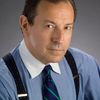As the French say, "plus ça change, plus c'est la même chose;" the more things change, the more they stay the same. Many of the startling revelations that we've seen with the San Bernardino terror shootings were experienced before in this country beginning more than a quarter century ago.
Among them, radical Islamists who had emigrated to the U.S. and led otherwise unremarkable lives as virtual "sleepers" before suddenly be "actualized" to commit epic works of violent terror. At the same time the FBI, the principal U.S. intelligence agency charged with protecting the Homeland was repeatedly outgunned and unable to predict such events, despite multiple warnings.
I told much of this story in two of my HarperCollins investigative books, "1000 Years For Revenge" (2003) and "Triple Cross: How bin Laden's Master Spy Penetrated the CIA, The Green Berets & The FBI" (2006/2009).
In each of those books I presented a 32 page illustrated timeline which I dubbed at the time "The Little Golden Book of Terror."
The timelines will give you a quick overview of how many of the principal players in the cell responsible for the 1993 WTC bombing and the 9/11 attacks were seemingly "every day" U.S. citizens or residents. Many, like San Bernardino shooter Syed Rizwan Farooq, actually worked in local government. But once triggered they were calmly willing to commit mass murder for the jihad.
El Sayyid Nosair, was a janitor in the civil courthouse in Lower Manhattan. Ahmed Amin Refai, was an accountant for the FDNY. Ahmed Abdel Sattar was a U.S. postal worker tied to blind Sheikh Omar Abdel Rahman, convicted in the 1994 "Day of Terror" plot to blow up the bridges & tunnels into Manhattan, the U.N. and the FBI's New York Office. Clement Rodney Hampton-El was a U.S. born Muslim who worked in a local hospital as a medical technician.
Mahmud Abouhalima, a redheaded Egyptian émigré, was a cab driver. Nidal Ayyad, was a Rutgers University Student. Except for FDNY accountant Refai, all of them were under the surveillance of the Bureau from July of 1989 and all were trained by al Qaeda master spy Ali Mohamed, responsible for planning the 1998 African Embassy bombings. But shortly after the FBI's initial surveillance the investigation was ended for unknown reasons and the Bureau failed for years to connect them to al Qaeda and a series of mass casualty terror plots.
The tragic irony of all this was that despite the multiple failures of the Bureau, courageous law enforcement officers like FDNY Fire Marshal Ronnie Bucca, an ex-Green Beret with a top secret clearance in an Army Reserve intelligence unit, repeatedly found evidence of jihadi involvement in the 1993 Twin Towers bombing and what would become the 9/11 plot.
But he was spurned by the FBI's Joint Terrorism Task Force, only to die heroically on the 78th floor of the South Tower on September 11th.
The complete timelines from each book can be accessed here: "1000 Years" and "Triple Cross."
They chronicle the trajectories of al Qaeda bomb maker Ramzi Yousef and his uncle Khalid Shaikh Mohammed (KSM) the operational agents of al Qaeda as well as Ali Mohamed who infiltrated three U.S. intelligences agencies.
